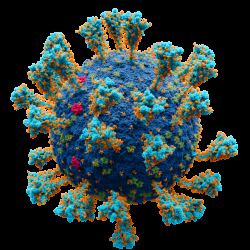We can create a public health infrastructure that is more resilient to outbreaks of viral illnesses by better understanding the nature of virus infections and how to address vaccine hesitancy.

Dr. Paul Offit, a pediatrician and director of the Vaccine Education Center at the Children’s Hospital of Philadelphia, was recently interviewed about the complexities surrounding COVID-19 vaccines and public health communication during the pandemic. His insights shed light on the science behind the vaccines, the challenges of achieving eradication versus control of a viral disease, and the critical role of trust in overcoming the nation’s rising vaccine hesitancy.
Understanding Eradication vs Control
Dr. Offit clarified the distinction between eradicating a virus and controlling it. A critical factor is the virus’ incubation period – that is, the time that elapses between exposure to the virus and the appearance of symptoms. Viruses with long incubation periods, like measles, allow the body to develop immune-system cells of two types that can either produce antibodies, which will protect you from mild disease for a few months, or “memory cells,” which are generally long-lived and sometimes lifelong.
For viruses with a long incubation period, like polio or measles (roughly 10-20 days), once a person is exposed to the virus either in nature or via a vaccine, the memory cells can effectively prevent even mild illness upon future exposure because they can become activated, produce antibodies and neutralize the virus before symptoms develop. This characteristic enables complete eradication through widespread vaccination, as exemplified by smallpox.
However, viruses with short incubation periods, like SARS-CoV-2 (which causes COVID-19) or respiratory syncytial virus (RSV), present a significant challenge. By the time the immune system mounts a robust response, some level of viral replication will often have occurred, leading to mild illness even in some vaccinated individuals. This is because the body's memory cells take time to activate and generate antibodies to fight off the virus. (However, they may prevent severe disease, which also takes time to develop.)
Therefore, for short-incubation-time viral illnesses like COVID-19, it is unlikely that we will achieve complete eradication through vaccination alone. To reduce the spread and severity of illness, the focus must shift toward control. That means measures such as masking, isolation of infected individuals, and improved ventilation in places where people congregate.
COVID-19 and Seasonality
According to Dr. Offit, the jury is still out on whether COVID-19 will follow a seasonal pattern like other coronaviruses, which typically peak in winter. While he acknowledges the uncertainty, he leans towards the likelihood of COVID-19 becoming a seasonal winter respiratory illness, joining the ranks of flu and RSV.
The Shifting Landscape of Vaccine Hesitancy
Dr. Offit spoke of a worrisome shift in the landscape of vaccine hesitancy. Traditionally, the movement came mainly from the ideological left, often associated with a preference for "natural" approaches and skepticism about conventional medicine. However, in recent years, there has been a surge in vaccine hesitancy on the political right, fueled by libertarian ideals that resist government mandates and interventions. This ideological shift, coupled with increased funding for anti-vaccine groups and widespread disinformation promulgated on the internet, presents a significant challenge to public health efforts.
Trust is Critical
Dr. Offit highlighted a hopeful development in the story of Dr. Ala Stanford. This Black surgeon at Temple University spearheaded the Black Doctors COVID Consortium, a community-driven initiative that addresses vaccine hesitancy within Black communities. Through trust-building efforts and open communication directly in peoples’ homes, Dr. Stanford's team has achieved remarkable success in increasing vaccination rates.
This powerful example underscores the critical role of local trust in overcoming vaccine hesitancy. Public health efforts that prioritize building trust with specific communities through relatable figures and culturally competent communication are critical complements to government public health officials' top-down approaches.
Dr. Offit also emphasized the importance of clear and realistic communication from public health officials. He speculated that early messaging surrounding COVID-19 vaccines might have inadvertently raised unrealistic expectations – for example, by not acknowledging the limitations and unknowns, such as the potential for breakthrough infections causing mild illness, especially as the SARS-CoV-2 virus mutated and evolved. He also expressed concern that the pandemic's erosion of trust in public health institutions could make tackling future outbreaks even more challenging.
Conclusion
Dr. Offit's insights offer valuable guidance for navigating the complexities of COVID-19 and future pandemics. By understanding the science behind eradication versus control, effectively addressing vaccine hesitancy through trust-building efforts, and prioritizing clear communication from trusted sources, we can create a more resilient public health infrastructure.
